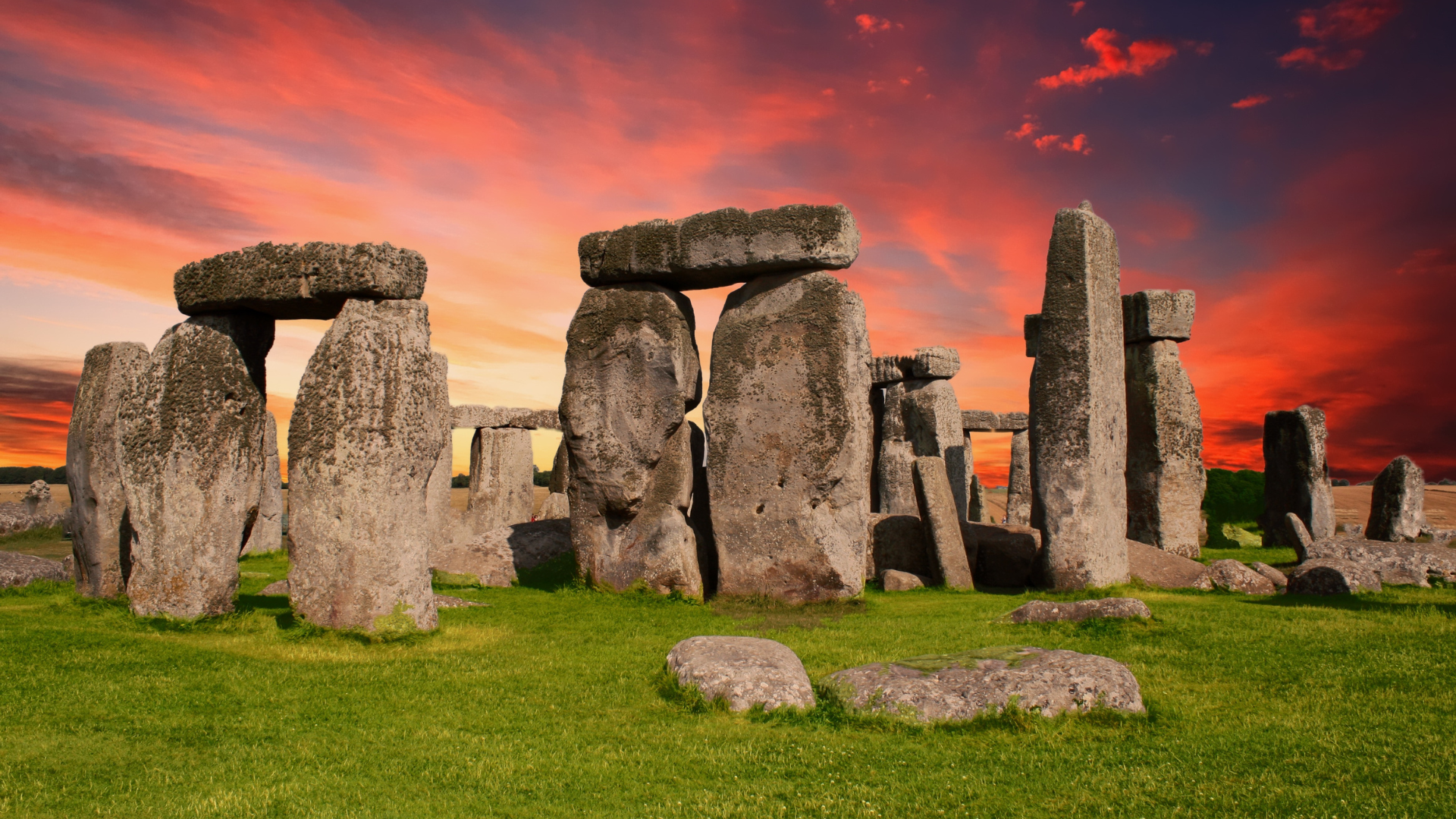Standing before a monument that has weathered centuries, touched by the hands of countless generations, creates an indescribable connection to human history. These historical landmarks serve as tangible links to our past, offering glimpses into civilizations that shaped our world. Whether you’re drawn to ancient ruins, medieval fortresses, or architectural marvels, certain sites transcend ordinary travel experiences and become transformative journeys through time.
The world’s best historical landmarks tell stories that textbooks cannot capture. They whisper tales of triumph and tragedy, innovation and destruction, love and war. From the sun-kissed stones of Petra to the misty battlements of Scottish castles, these destinations offer more than photo opportunities, they provide windows into the souls of civilizations.

Why Historical Landmarks Matter More Than Ever
In our digital age, visiting famous historical landmarks has become increasingly important for understanding our shared human heritage. These sites offer authentic experiences that virtual tours simply cannot replicate. The weight of history becomes palpable when you walk the same paths as ancient emperors, medieval knights, or revolutionary leaders.
Historical landmarks for history lovers provide educational value that extends far beyond traditional classroom learning. They challenge our perspectives, broaden our understanding of different cultures, and remind us of humanity’s incredible capacity for both creation and destruction. Many UNESCO historical landmarks face ongoing threats from climate change, tourism pressure, and political instability, making visits both more urgent and meaningful.
However, traveling to these destinations isn’t without challenges. Popular historical landmarks often struggle with overcrowding, leading to restricted access and diminished experiences. Some sites require extensive advance planning, while others may be located in regions with political tensions or limited infrastructure.
The Crown Jewels: Europe’s Most Magnificent Historical Landmarks
1. The Colosseum, Rome, Italy
Rome’s ancient amphitheater stands as perhaps the most recognizable symbol of the Roman Empire’s power and brutality. This architectural marvel, completed in 80 AD, once held 50,000 spectators who gathered to witness gladiatorial contests and public spectacles. Walking through its underground passages, where wild animals and fighters once waited for their turn in the arena, provides a chilling glimpse into ancient entertainment culture.
The Colosseum represents one of the top historical landmarks in Europe, showcasing Roman engineering prowess that modern architects still study today. Its innovative design included a complex system of pulleys, elevators, and trapdoors that created spectacular shows for the masses.
2. Stonehenge, England, UK
This prehistoric monument continues to baffle archaeologists and visitors alike. The massive stone circle, constructed between 3100 and 1600 BC, raises questions about ancient British civilizations that we may never fully answer. Recent discoveries suggest the site served multiple purposes—from burial ground to astronomical calendar.
Among historical landmarks in the UK, Stonehenge offers a unique mystical experience. Standing stones arranged with mathematical precision point to sophisticated understanding of astronomy and engineering among Neolithic peoples. The site’s isolation on Salisbury Plain adds to its otherworldly atmosphere, especially during sunrise and sunset when shadows dance between the ancient stones.
3. Neuschwanstein Castle, Germany
This 19th-century fairy-tale castle represents medieval historical landmarks reimagined through romantic idealism. Built by Ludwig II of Bavaria, the castle combines Gothic Revival architecture with cutting-edge technology of its time, including running water and central heating throughout its 200 rooms.
While critics argue that Neuschwanstein lacks authentic medieval history, its influence on popular culture and architectural design cannot be denied. The castle demonstrates how historical landmarks for families can spark imagination and wonder across generations.
Ancient Wonders That Defy Time
4. Petra, Jordan
Carved directly into rose-red sandstone cliffs, Petra showcases the architectural genius of the Nabataean civilization. This ancient trading city flourished from the 4th century BC to the 2nd century AD, serving as a crucial link between Arabian, Egyptian, and Syrian-Phoenician trade routes.
The Treasury, Petra’s most famous facade, reveals intricate details that have survived nearly two millennia of desert winds and rare rainfall. Walking through the narrow Siq canyon that leads to this archaeological wonder creates anticipation that builds to an unforgettable revelation.
As one of the premier historical landmarks in Asia (Middle East), Petra faces ongoing conservation challenges. Sandstone erosion, increased tourism, and limited water resources threaten this UNESCO World Heritage site’s long-term preservation.
5. Angkor Wat, Cambodia
The world’s largest religious monument complex represents the pinnacle of Khmer architecture and Hindu-Buddhist spiritual traditions. Built in the early 12th century, Angkor Wat originally served as a Hindu temple dedicated to Vishnu before gradually transforming into a Buddhist site.
The temple’s five central towers symbolize Mount Meru, the center of the universe in Hindu cosmology. Intricate bas-reliefs covering the walls depict scenes from Hindu epics, providing insight into medieval Southeast Asian religious practices and artistic techniques.
This remarkable site among historical landmarks in Asia demonstrates both human achievement and nature’s power to reclaim civilization. Massive tree roots intertwine with ancient stones, creating haunting beauty that photographers and travelers find irresistible.
New World Marvels
6. Machu Picchu, Peru
Perched 7,970 feet above sea level in the Andes Mountains, this “Lost City of the Incas” remained hidden from Spanish conquistadors and wasn’t revealed to the outside world until 1911. The precisely cut stone structures, built without mortar, have withstood centuries of earthquakes and weather extremes.
Machu Picchu represents one of the most significant historical landmarks in America (South America), showcasing Incan engineering and astronomical knowledge. The site’s agricultural terraces, water management systems, and architectural alignment with celestial events reveal sophisticated understanding of both practical and spiritual needs.
Access limitations protect this fragile site from over-tourism, but they also create challenges for visitors. Advanced reservations, physical fitness requirements, and weather dependencies can complicate travel plans.
7. Chichen Itza, Mexico
This pre-Columbian Maya city demonstrates the mathematical and astronomical sophistication of ancient American civilizations. The famous El Castillo pyramid creates acoustic phenomena and shadow effects during equinoxes that continue to amaze visitors and researchers.
The site’s ball court, the largest in ancient Mesoamerica, hosted ritual games with rules and significance we’re still trying to understand. These games likely had religious and political implications far beyond simple entertainment.
African Treasures
8. The Pyramids of Giza, Egypt
No list of ancient historical landmarks would be complete without Egypt’s most iconic monuments. Built as tombs for Fourth Dynasty pharaohs around 2580-2510 BC, these structures represent humanity’s earliest attempts at monumental architecture.
The Great Pyramid remained the world’s tallest human-made structure for nearly 4,000 years. Its precise construction, involving over 2 million stone blocks, showcases engineering capabilities that challenge modern construction methods.
Recent technological advances, including cosmic ray imaging, continue to reveal new chambers and secrets within these ancient monuments. The pyramids serve as ongoing research laboratories that keep rewriting our understanding of ancient Egyptian civilization.
Asian Architectural Masterpieces
9. The Great Wall of China
Stretching over 13,000 miles across northern China, this fortification system represents the largest construction project in human history. Built and rebuilt by various dynasties over more than 1,000 years, the wall demonstrates both Chinese engineering capabilities and the massive human cost of ambitious projects.
Contrary to popular belief, the Great Wall is not visible from space with the naked eye, but it remains one of the most impressive historical landmarks for tourists. Different sections offer varying experiences, from restored tourist-friendly areas to crumbling authentic ruins.
The wall’s construction required enormous human sacrifice, with hundreds of thousands of workers dying during its various construction phases. This darker aspect of its history reminds us that many historical landmarks carry complex legacies of both achievement and suffering.
10. Taj Mahal, India
This white marble mausoleum represents the pinnacle of Mughal architecture and one of history’s greatest expressions of love. Built by Emperor Shah Jahan as a tomb for his wife Mumtaz Mahal, the Taj Mahal combines Islamic, Persian, Ottoman Turkish, and Indian architectural styles.
The monument’s perfect symmetry, intricate inlay work, and changing appearance throughout the day create an almost ethereal experience. As one of the most famous historical landmarks in India, it attracts millions of visitors annually, creating both economic benefits and conservation challenges.
Air pollution from nearby industrial areas threatens the marble’s pristine appearance, requiring ongoing restoration efforts and environmental protection measures.
Planning Your Historical Landmarks Journey
Visiting these historical landmarks for tourists requires careful planning and realistic expectations. Popular sites often implement visitor quotas, advance booking requirements, and seasonal restrictions. Research local customs, dress codes, and photography rules before traveling.
Consider hiring local guides who can provide historical context and cultural insights that enhance your experience. Many historical landmarks photography opportunities require specific timing for optimal lighting and fewer crowds.
Budget considerations extend beyond entrance fees to include transportation, accommodation, and potential guide services. Some remote sites require significant travel investments, while others offer more accessible experiences.
The Challenges of Landmark Tourism
Modern tourism presents both opportunities and threats to historical preservation. Increased visitor numbers provide funding for maintenance and restoration projects, but they also accelerate wear and damage to fragile structures.
Climate change poses growing threats to many sites, from rising sea levels affecting coastal monuments to increased temperatures damaging ancient materials. Some historical landmarks travel guide recommendations now include information about optimal seasons for both visitor comfort and site protection.
Political instability in certain regions can make access to some landmarks unpredictable or dangerous. Always check current travel advisories and consider geopolitical factors when planning visits to international sites.
Ethical tourism practices become crucial when visiting historical landmarks near me or abroad. Respecting local communities, following site rules, and supporting conservation efforts help ensure these treasures survive for future generations.
Making the Most of Your Visits
Each historical landmark offers unique experiences that extend beyond simple sightseeing. Prepare by reading historical background, understanding cultural significance, and learning about ongoing preservation efforts. This preparation transforms visits from tourist stops into meaningful educational experiences.
Consider traveling during shoulder seasons when crowds are smaller and weather conditions may be more favorable. Early morning or late afternoon visits often provide better lighting for photography and more contemplative experiences.
Remember that these sites represent living history, not museum pieces. Many continue to serve religious, cultural, or community functions that deserve respect and understanding from visitors.
What are the most famous historical landmarks in the world?
The most internationally recognized historical landmarks include the Great Wall of China, Machu Picchu, the Taj Mahal, Stonehenge, the Pyramids of Giza, the Colosseum, Petra, Angkor Wat, Chichen Itza, and Neuschwanstein Castle. These sites represent different civilizations, time periods, and architectural achievements that have captured global imagination.
How do I find historical landmarks near me?
Start by checking local tourism websites, historical societies, and national park services for information about nearby sites. Many regions have lesser-known historical landmarks that offer rich experiences without the crowds of famous international destinations. Local museums often provide maps and guides to regional historical sites.
What should I consider when planning visits to UNESCO historical landmarks?
UNESCO sites often have specific visitor guidelines, seasonal restrictions, and advance booking requirements. Research accessibility options, transportation logistics, and local accommodation well ahead of your visit. Many sites limit daily visitor numbers to protect the monuments, so advance planning is essential.
Are historical landmarks suitable for families with children?
Many historical landmarks offer excellent educational opportunities for families, though some sites may be challenging for very young children due to walking requirements, crowds, or safety considerations. Research family-friendly facilities, educational programs, and age-appropriate activities before visiting. Some sites offer special tours designed specifically for children.
How can I contribute to historical landmark preservation?
Support preservation efforts by following site rules, staying on designated paths, and not touching fragile structures. Choose responsible tour operators who prioritize conservation. Consider donating to preservation organizations or participating in volunteer programs. Practice sustainable tourism by minimizing environmental impact and respecting local communities.







